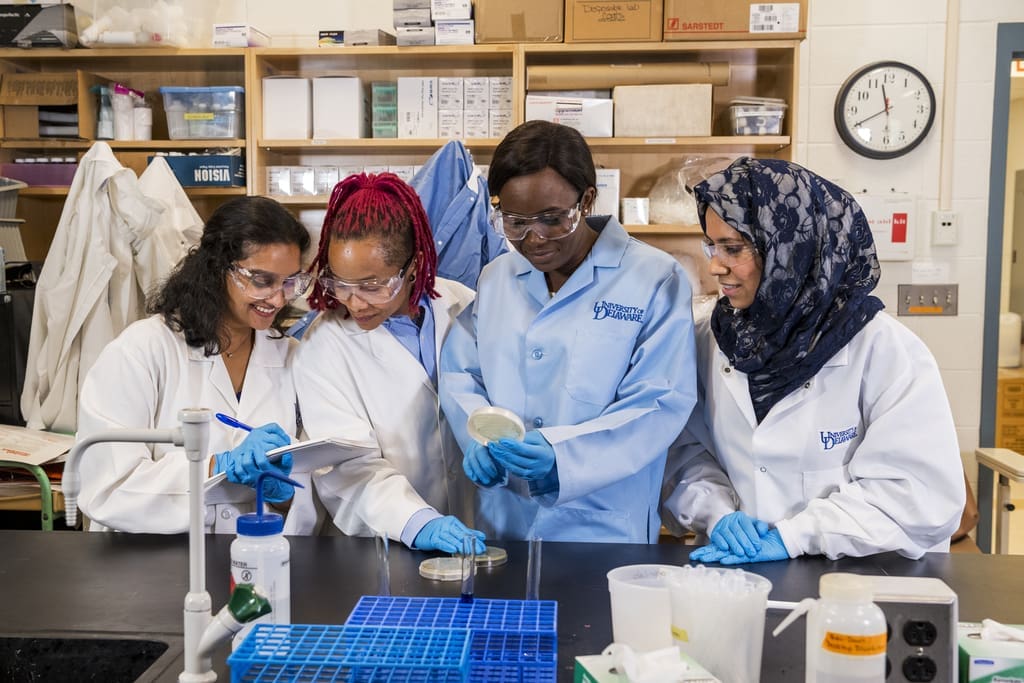

UD has been ranked 47th in the nation for research and development. Photo courtesy of University of Delaware.
The University of Delaware is climbing the national rankings for best universities for research and development.
The National Science Foundation recently released its Higher Education Research and Development Survey findings, which ranks the Blue Hens 47 out of 626 academic institutions across the country for non-medical school research and development expenditures.
That caveat is because UD does not have a medical school.
Last year, the school was ranked at 78.
With the 31-spot leap in the standings, UD is now in the top 8% nationally for research and development activities.
UD is sandwiched between the University of Utah at 46 and Rockefeller University at 48.
It also lands just five spots below Stanford University. Johns Hopkins University is at the top of the rankings.
UD ranked 78 in total research spending (52 among public universities), up from 109 (73 for public). The university reported research and development expenditures of $368 million, up 59% from the previous year’s $231 million expenditure.
Research and development expenditures are essentially investments, sometimes funds provided by external sponsors like federal and state grants, or funds from the college itself, to support investigators with a variety of research needs.
“The University of Delaware is deeply committed to advancing innovation and problem-solving,” University President Dennis Assanis said. “This latest ranking reflects the drive and ingenuity of our faculty, staff and students, as well as the significant investment UD is making to support their critical work — from our world-class core facilities to our successful research development programs.”
In this fiscal year alone, UD has been awarded 520 research proposals. Some of the research toppings include high-interval training to recover walking after a stroke, and recycled textile and apparel manufacturing.
Since 2018, UD has hired 460 faculty, providing startup funds to help new researchers establish their labs and procure the equipment needed for their work.
It also provides tuition remission to support graduate students who contribute to research projects with their advisers through a university fellowship or graduate assistantship.
Another highlight of UD’s commitment to research is offering opportunities in a variety of professional development programs like the NIH Academy, which prepares researchers to become successful grantees of the National Institutes of Health through a program of mentoring and proposal preparation.
Their Research Office also helps students connect with the NSF CAREER Academy, a six-month proposal preparation program assisting tenure-track faculty in competing for one of the National Science Foundation’s funding awards for early-career scholars.
“The Research Office is here to support our investigators in their endeavors, and we applaud their success,” said Kelvin Lee, interim vice president for research, scholarship and innovation. “Our team has the expertise and dedication to help move this important work forward, from identifying grant opportunities to protecting and promoting UD discoveries and inventions.”
The university also credits its core facilities with cutting-edge instruments and services for its jump in the rankings.
Another facility – Building X – is expected to open late next year, which is designed around three main themes: Mind, brain and behavior; models and mechanisms of human disease; and quantum science and technology.
RELATED: UD’s Building X aims to drive research, cutting-edge learning
Students and researchers should have access to the $165 million science and research hub beginning in the 2024-2025 academic year.


Raised in Doylestown, Pennsylvania, Jarek earned a B.A. in journalism and a B.A. in political science from Temple University in 2021. After running CNN’s Michael Smerconish’s YouTube channel, Jarek became a reporter for the Bucks County Herald before joining Delaware LIVE News.
Share this Post



